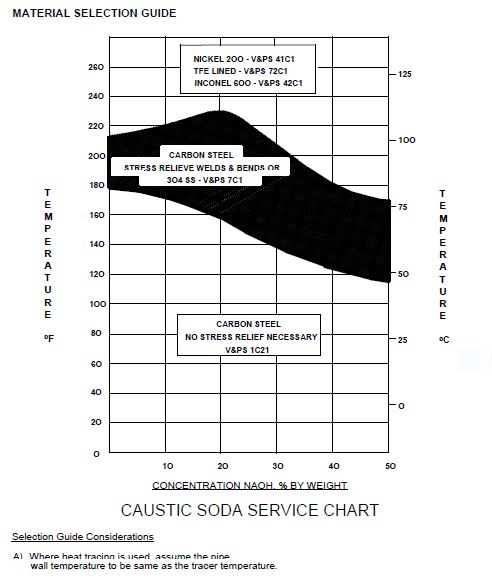Pavan Kumar
Chemical
Hi All,
I wanted to get hold of a reliable and verifiable source that gives the compatibility of SS316 material of construction for piping that will be used in 10% (w/V) NaOH solution. Can someone suggest a source that I cam refer to. My internet searches like the one below, have shown some charts but I am not sure if they are standard sources.
Thanks and Regards,
Pavan Kumar
I wanted to get hold of a reliable and verifiable source that gives the compatibility of SS316 material of construction for piping that will be used in 10% (w/V) NaOH solution. Can someone suggest a source that I cam refer to. My internet searches like the one below, have shown some charts but I am not sure if they are standard sources.
Thanks and Regards,
Pavan Kumar

